Description
Have you ever noticed, your nursing school requires a major investment of your precious capital, a huge commitment of your limited time or a complete restructuring of your entire life?
Guess what, today… in just a few minutes… with a simple, inexpensive trick… easily incorporated into your daily routine, you can set yourself well on the pathway to dynamic nursing and career success! And it all starts with a simple nursing test bank purchase on our website. Right after you checkout on our secure, private and confidential website, we will instantly email you all chapters for Biology Hardcover 10th Edition Raven Johnson Mason.
Chapter 02
The Nature of Molecules and the Properties of Water
Multiple Choice Questions
- Matter is composed of:
A. molecules
B. mass
C. atoms
D. energy
Blooms Level: 1. Remember
LO: 02.01.01 Define an element based on its composition.
Section: 02.01 The Nature of Atoms
Topic: Chemistry
- All atoms possess the ability to do work. The term that is defined as the ability to do work is:
A. matter
B. energy
C. molecules
D. space
Blooms Level: 1. Remember
LO: 02.01.02 Describe how atomic structure produces chemical properties.
Section: 02.01 The Nature of Atoms
Topic: Chemistry
- The number of protons in a given atom is equal to its:
A. neutron number
B. atomic number
C. molecular number
D. mass
Blooms Level: 1. Remember
LO: 02.01.02 Describe how atomic structure produces chemical properties.
Section: 02.01 The Nature of Atoms
Topic: Chemistry
- Isotopes that are unstable and decay when their nucleus breaks up into elements with lower atomic numbers, emitting significant amounts of energy in the process, are called:
A. energetic
B. ionic
C. radioactive
D. isometric
Blooms Level: 1. Remember
LO: 02.01.02 Describe how atomic structure produces chemical properties.
Section: 02.01 The Nature of Atoms
Topic: Chemistry
- Atoms containing a specific number of protons are called:
A. elements
B. minerals
C. molecules
D. metals
Blooms Level: 1. Remember
LO: 02.02.01 Relate atomic structure to the periodic table of the elements.
Section: 02.02 Elements Found in Living Systems
Topic: Chemistry
- Sugars dissolve well in water because of water’s ______.
A. ionic bonds
B. polarity
C. cohesiveness
D. hydrophobic exclusion
Blooms Level: 3. Apply
LO: 02.03.03 Contrast polar and nonpolar covalent bonds.
Section: 02.03 The Nature of Chemical Bonds
Topic: Chemistry
- The negative logarithm of the hydrogen ion concentration in the solution is referred to as:
A. pH
B. atomic mass
C. -OH concentration
D. electronegativty
E. specific heat
Blooms Level: 1. Remember
LO: 02.06.01 Define acids, bases, and the pH scale.
Section: 02.06 Acids and Bases
Topic: Chemistry
- Bicarbonate ions in the blood can absorb hydrogen ions, keeping pH balanced. Bicarbonate is acting as a ____ in blood.
A. base
B. buffer
C. alkaline
D. acid
Blooms Level: 3. Apply
LO: 02.06.01 Define acids, bases, and the pH scale.
Section: 02.06 Acids and Bases
Topic: Chemistry
- Atomic nuclei contain protons and _______.
A. moles
B. isomers
C. neutrons
D. ions
Blooms Level: 1. Remember
LO: 02.01.01 Define an element based on its composition.
Section: 02.01 The Nature of Atoms
Topic: Chemistry
- Carbon-12, Carbon-13 and Carbon-14 are examples of:
A. isomers
B. isotopes
C. ions
D. molecules
Blooms Level: 1. Remember
LO: 02.01.02 Describe how atomic structure produces chemical properties.
Section: 02.01 The Nature of Atoms
Topic: Chemistry
- Organisms are composed of molecules, which are collections of smaller units, termed:
A. monomers.
B. atoms.
C. electrons.
D. polymers.
E. ions.
Blooms Level: 1. Remember
LO: 02.01.01 Define an element based on its composition.
Section: 02.01 The Nature of Atoms
Topic: Chemistry
- Negatively charged subatomic particles that have almost no mass are called:
A. electrons.
B. protons.
C. neutrons.
D. ions.
E. polymers.
Blooms Level: 1. Remember
LO: 02.01.03 Explain where electrons are found in an atom.
Section: 02.01 The Nature of Atoms
Topic: Chemistry
- Atoms of a single element that possess different numbers of neutrons are called:
A. ions.
B. monomers.
C. isomers.
D. isotopes.
E. polymers.
Blooms Level: 1. Remember
LO: 02.01.02 Describe how atomic structure produces chemical properties.
Section: 02.01 The Nature of Atoms
Topic: Chemistry
- Cl + e– ® Cl– is an example of a:
A. oxidation.
B. reduction.
C. ionization.
D. polymerization.
Blooms Level: 3. Apply
LO: 02.01.03 Explain where electrons are found in an atom.
Section: 02.01 The Nature of Atoms
Topic: Chemistry
- When atoms gain or lose electrons, they become negatively or positively charged. These negatively or positively charged atoms are known as
A. unstable atoms.
B. ions.
C. isotopes.
D. isomers.
Blooms Level: 3. Apply
LO: 02.03.01 Predict which elements are likely to form ions.
Section: 02.03 The Nature of Chemical Bonds
Topic: Chemistry
- When two atoms share a pair of electrons, the bonding is referred to as:
A. ionic.
B. covalent.
C. unstable.
D. hydrogen.
Blooms Level: 1. Remember
LO: 02.03.02 Explain how molecules can be built from atoms joined by covalent bonds.
Section: 02.03 The Nature of Chemical Bonds
Topic: Chemistry
- Water molecules are polar with ends that exhibit partial positive and negative charges. These opposite charges allow water molecules to attract each other through:
A. ionic bonds.
B. covalent bonds.
C. hydrogen bonds.
D. peptide bonds.
Blooms Level: 2. Understand
LO: 02.04.01 Relate how the structure of water leads to hydrogen bonds.
Section: 02.03 The Nature of Chemical Bonds
Topic: Chemistry
- An atom has 20 electrons and 20 neutrons. What is the mass of this atom?
A. 10
B. 20
C. 40
D. 80
Blooms Level: 3. Apply
LO: 02.02.01 Relate atomic structure to the periodic table of the elements.
Section: 02.02 Elements Found in Living Systems
Topic: Chemistry
- Sue was monitoring the oil spill into the Gulf of Mexico from an oil tanker. From her observations, she noted that the oil was moving as large patches in the water. It did not appear as though the oil was dissolving into the water. Why did the oil not dissolve into the water?
A. Hydrophobic interactions
B. Surface tension
C. Sea water acts as a solvent
D. Water forms hydration shells
E. Water has a high heat of vaporization
Blooms Level: 3. Apply
LO: 02.05.02 Explain the relevance of waters unusual properties for living systems.
Section: 02.05 Properties of Water
Topic: Chemistry
- The atomic number of an element is equal to the number of:
A. neutrons only.
B. protons plus electrons.
C. protons only.
D. neutrons plus electrons.
E. protons plus neutrons.
Blooms Level: 1. Remember
LO: 02.01.02 Describe how atomic structure produces chemical properties.
Section: 02.01 The Nature of Atoms
Topic: Chemistry
- Oxygen has an atomic mass of 16 and an atomic number of 8. How many neutrons are present?
A. 4
B. 24
C. 8
D. 16
Blooms Level: 3. Apply
LO: 02.02.01 Relate atomic structure to the periodic table of the elements.
Section: 02.02 Elements Found in Living Systems
Topic: Chemistry
- The pH of your small intestines is around 7.5 and the pH of your large intestine can be 5.5. As substances travel from the small intestines to the large intestine, what would happen to the H+ ion concentration?
A. It decreases 100 fold.
B. It increases by 100 fold.
C. It increases 10 fold.
D. It increases 2 fold.
E. It decreases 10 fold.
Blooms Level: 3. Apply
LO: 02.06.02 Relate changes in pH to changes in [H ].
Section: 02.06 Acids and Bases
Topic: Chemistry
- Oxygen-16 is abundant and has 8 protons and 8 neutrons. Oxygen-18 has two extra neutrons. These two forms are:
A. oxygen dimers.
B. oxygen isotopes.
C. oxygen isomers.
D. oxygen ions.
Blooms Level: 2. Understand
LO: 02.01.02 Describe how atomic structure produces chemical properties.
Section: 02.01 The Nature of Atoms
Topic: Chemistry
- Which element’s isotope is commonly used to determine when biological samples such as fossils, were formed?
A. oxygen
B. hydrogen
C. carbon
D. nitrogen
E. sulfur
Blooms Level: 1. Remember
LO: 02.01.02 Describe how atomic structure produces chemical properties.
Section: 02.01 The Nature of Atoms
Topic: Chemistry
- Atoms in which the number of electrons does not equal the number of protons are known as:
A. valences.
B. ions.
C. isotopes.
D. isomers.
Blooms Level: 2. Understand
LO: 02.01.02 Describe how atomic structure produces chemical properties.
Section: 02.02 Elements Found in Living Systems
Topic: Chemistry
- The area around a nucleus where an electron is most likely to be found is the:
A. electrical space.
B. energy level.
C. polar space.
D. orbital.
Blooms Level: 1. Remember
LO: 02.01.03 Explain where electrons are found in an atom.
Section: 02.01 The Nature of Atoms
Topic: Chemistry

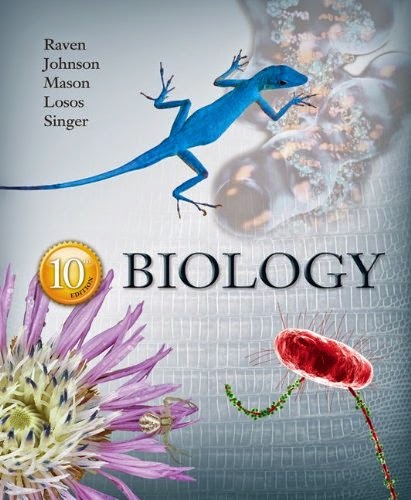
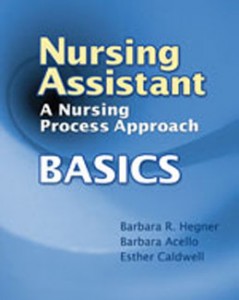
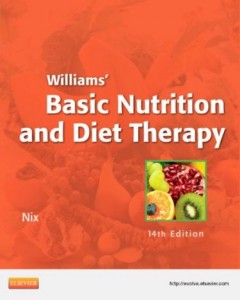
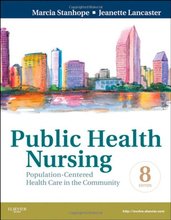
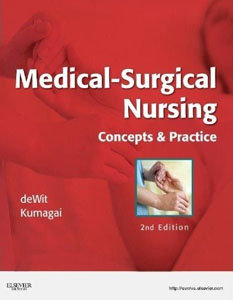

Reviews
There are no reviews yet.